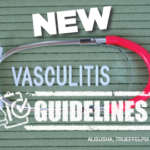The next step is assembling a complete and systematic review of the medical literature that directly or indirectly addresses the chosen scenarios. This review is performed by a literature review team working in consultation with the core leadership team and the broader guideline development group. This team compiles the evidence to address the questions the expert panel helped develop. The evidence addressing all the chosen questions is presented in a systematic report.
Next, a separate voting panel examines the evidence report. Dr. Neogi explains, “The voting panel then reviews the evidence for those questions and determines what recommendations to make.”
This voting panel comprises rheumatologists, other relevant specialists (including primary care, where appropriate), stakeholders with clinical expertise in the target treatment areas and patient participants. After voting, the findings are compiled into a guideline draft that then undergoes a process of peer review by the ACR and its journals before final publication. Each guideline must be reviewed and endorsed by the ACR Guideline Subcommittee, Quality of Care Committee and Board of Directors.
The ACR … requires more than half of the guideline development team’s experts have no conflicts of interest with regard to industry support in the topic area of the guideline.
Specifics of the GRADE methodology
The ACR currently uses a specific system to develop its guidelines: the GRADE methodology (Grading of Recommendations Assessment, Development and Evaluation), an internationally accepted systematic approach to guideline development.
GRADE is not the only such rating system available. Many earlier ACR guidelines (such as the 2012 gout guidelines) used the RAND/UCLA method, a somewhat different method of compiling and evaluating evidence.6
GRADE was used in the following ACR guidelines: osteoarthritis (2012), axial spondyloarthritis (2015), polymyalgia rheumatica (2015), rheumatoid arthritis (2015), glucocorticoid-induced osteoporosis (2017) and perioperative management of antirheumatic medication (2017).3,7-11 Comparing it with the RAND/UCLA method, Dr. Caplan notes, “GRADE is more explicit and systematic about how a level of evidence is translated into a recommendation and more transparent about the limitations of the evidence.”
GRADE has certain other advantages over other rating systems. Unlike some other methods, it clearly distinguishes the quality of evidence from the strength of recommendations. It provides clear and pragmatic interpretations for strong vs. conditional recommendations. GRADE gives explicit and comprehensive criteria for downgrading or upgrading quality-of-evidence ratings. It focuses on the evaluation assessing two or more discreet alternative management strategies rather than general management principles. Another advantage is that GRADE explicitly acknowledges that values and preferences should play a role in recommendations.12



